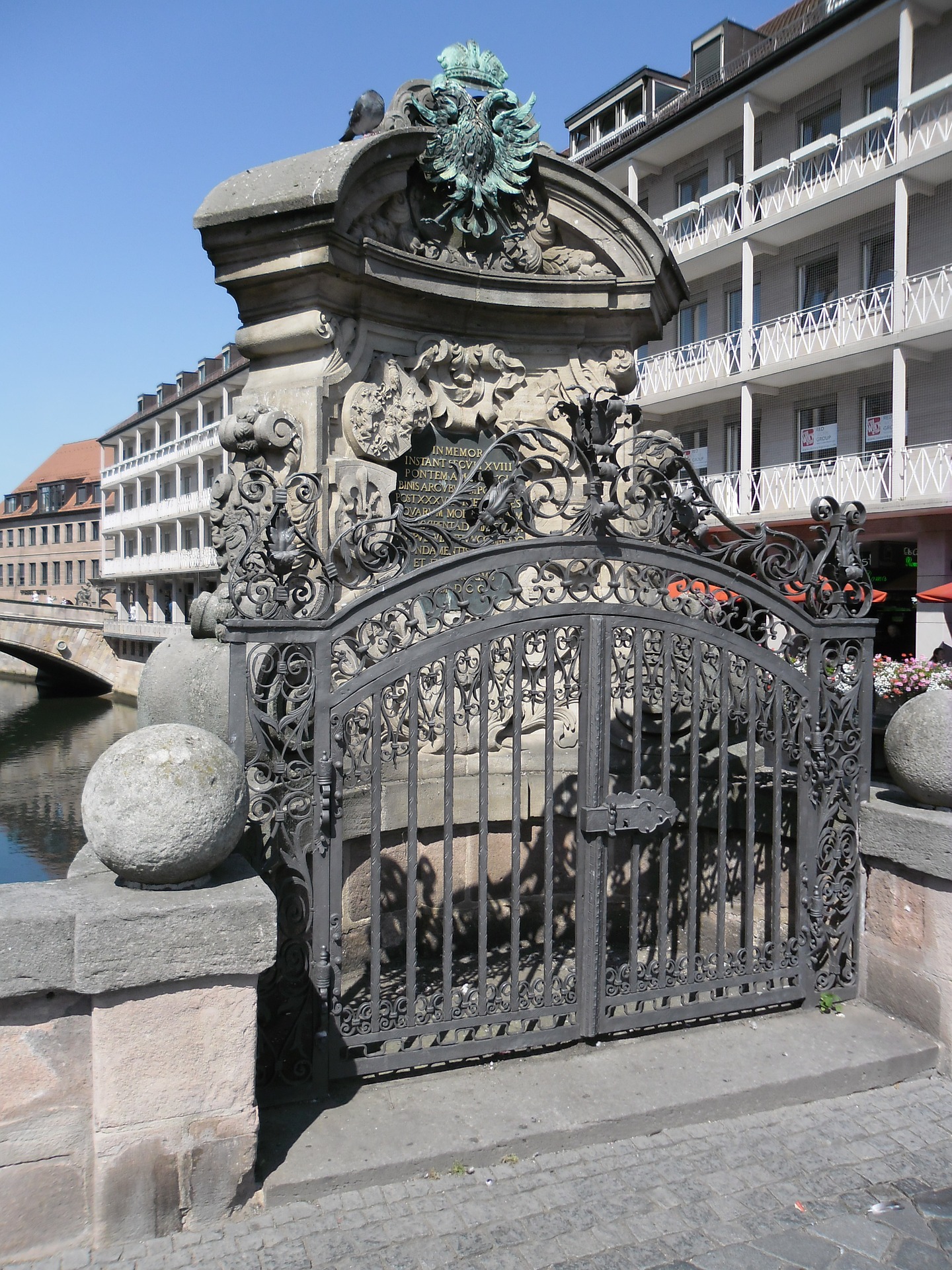Museumsbrücke
The museum bridge is a sandstone arch bridge that spans the Pegnitz in Nuremberg. The road bridge is located at the beginning of Königstrasse and connects the St. Sebald and St. Lorenz districts of Nuremberg. It is located between the main market and Lorenzer Platz. Nuremberg’s oldest bridge over the Pegnitz is believed to be the site of today’s Museum Bridge. A wooden bridge is documented for the 13th century. Since the building connected the Franciscan monastery with the city, it was called the Barfüßerbrücke. However, floods repeatedly destroyed the bridge at this location in the centuries that followed. In 1484, a new building with stone substructures and a wooden superstructure followed. In 1590 the building was badly damaged by floods again. Due to the ongoing maintenance work, the city decided in 1699 to replace the construction with a completely massive bridge. In 1700 the bridge was built with two stone arch openings and named after King Joseph I as the Joseph or King’s Bridge. The Pegnitz crossing was adorned by two baroque pulpit structures with wrought-iron grilles, which were arranged on the power pillar. The western structure is decorated with the coats of arms of the six members of the city government at that time. In the 19th century, the name was changed to Museum Bridge, because on the site of the former Barfüßerkirche the "Museum" society, a society for reading and reading, had a meeting house.



